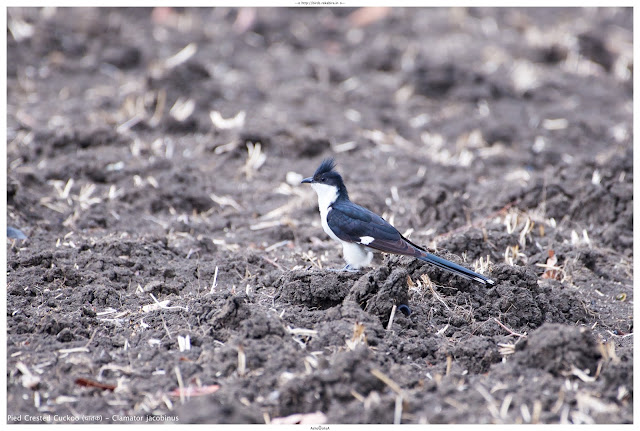Birds Around Me 0165 - Jacobin cuckoo, pied cuckoo, or pied crested cuckoo (चातक) - Clamator jacobinus

Jacobin cuckoo, pied cuckoo, or pied crested cuckoo (चातक) - Clamator jacobinus Taken on June 26, 2018 Location: Sanjivini Nagar, Jabalpur, India (Latitude: 23.172826, Longitude: 79.881881) Jacobin cuckoo, pied cuckoo, or pied crested cuckoo (चातक) - Clamator jacobinus medium-sized (31cm), slim black and white cuckoo with a crest is distinctive. The white wing patch on the black wing and the pattern make it unmistakable even in flight. They are very vocal during the breeding season. The call is a ringing series of whistling notes "piu-piu" with the calls of the nominate form more rapid and slightly mellower. Identification: Pied crested appearance distinctive. Bird Facts: Pied crested cuckoo (चातक) species is widely mentioned in ancient Indian poetry as the chātaka ( चातक) . According to Indian mythology it has a beak atop its head and it thirsts for the rains. It is partially migratory and in India, it has been considered a harbinger of the monsoon rain

.jpg)
